Calling all intrepid souls and curious minds! Shiva here, beaming live from the emerald crown of India, Arunachal Pradesh! Towering Himalayan giants pierce the cerulean sky, while cascading waterfalls whisper secrets to the wind. But wait, there’s more! Today, we’re venturing into the heart of a land woven with vibrant threads – the world of the Miju Mishmi tribe. Prepare to be dazzled by a living kaleidoscope of colors, from their head-turning attire to legendary love stories with a surprising twist. Brace yourselves, because this Arunachal adventure promises to be a tapestry of magic!
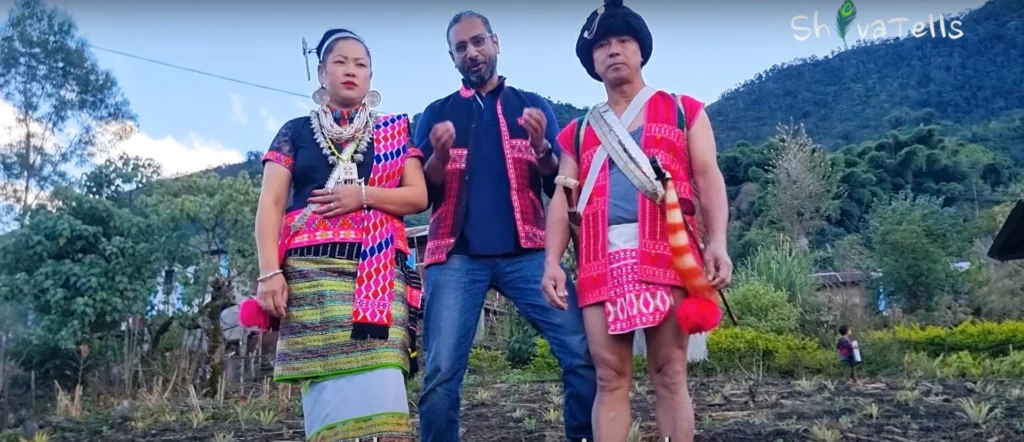
Table of Contents
Arunachal Pradesh: A Paradise Untamed
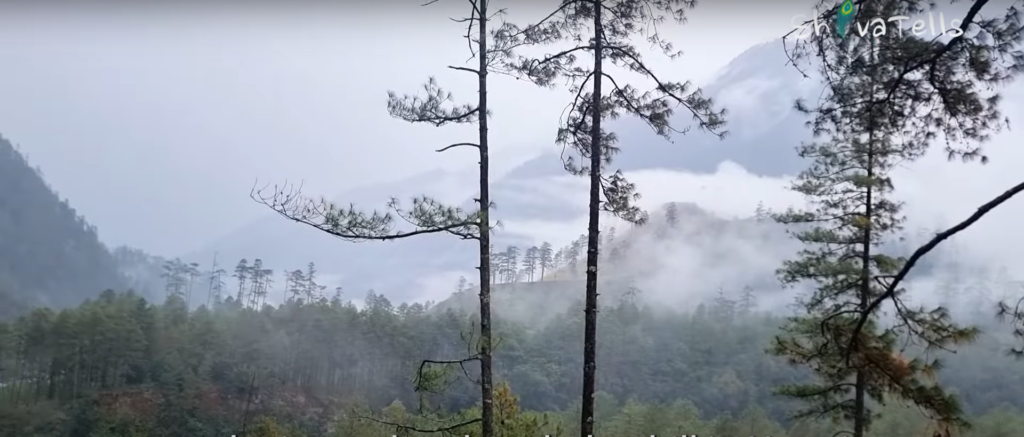
The humid air hung heavy with the scent of a thousand unnamed blooms. Sunlight dripped like honey through the emerald canopy, dappling a valley carpeted with wildflowers in every shade imaginable. In the distance, snow-capped giants, their peaks scraping the azure canvas of the sky, wore a veil of mist that seemed to whisper secrets to the world below. Here, the Lohit district of Arunachal Pradesh unfolded like a living fairytale – untouched by the clamor of the modern world, a place that felt more like stepping into a National Geographic documentary come to life, only infinitely more thrilling. This untamed paradise was home to the Miju Mishmi people, a vibrant tribe nestled amidst the lush embrace of these breathtaking hills.
My journey began in the scenic town of Tezu, the gateway to Arunachal Pradesh. Lush green hills rolled into the distance, the air crisp and clean. After securing the necessary permits (Arunachal Pradesh is a bit particular about who visits!), I hopped on a jeep, ready to meet the Miju Mishmi people. The bumpy ride was a small price to pay for the breathtaking views that unfolded with every turn – gushing rivers carving their way through valleys, and traditional villages clinging to the hillsides like colorful jewels.
History of Miju Mishmi Tribe
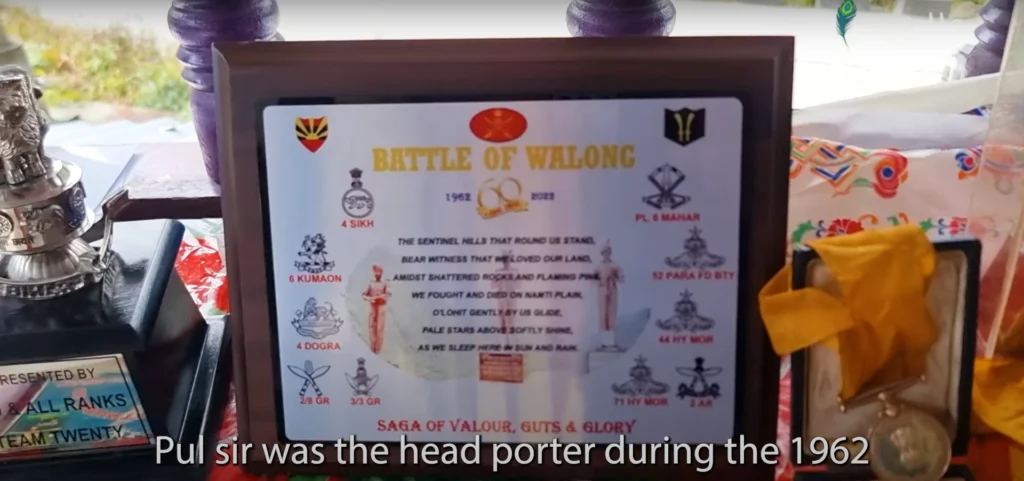
The jeep rumbled to a halt, the engine sighing its final breaths. Stepping out, I was greeted by a sight that snatched the breath right out of my lungs. Lush valleys, like emeralds ripped from a forgotten treasure chest, stretched out before me. A vibrant carpet of wildflowers, each blossom a testament to nature’s artistry, painted the ground in a riot of colors. Towering above it all, the snow-capped peaks of the Himalayas scraped the sky, their icy crowns gleaming under a benevolent sun. But the real magic lay hidden in the wispy tendrils of mist that clung to the rivers below. They snaked their way through the landscape like silver serpents, their gentle gurgling a language only the wind seemed to understand. This wasn’t your average National Geographic documentary, folks. This was Arunachal Pradesh, a land untouched by the modern world, a place so breathtaking it felt like stepping into a living fairytale. And nestled amidst the lush embrace of the Lohit district’s hills, I knew I was about to meet the people who called this paradise home – the Miju Mishmi tribe.
The Miju Mishmi, also known as the Kaman or Kammaan tribe, are one of the three branches of the larger Mishmi people who inhabit the eastern Himalayas. Their history, like the mist-shrouded valleys of their homeland, is shrouded in a veil of mystery. Unlike some tribes who have passed down their stories through written records, the Miju Mishmi tribe rely on oral histories, tales whispered from generation to generation around crackling fires. Some historians believe they migrated from Myanmar, their colorful attire and language hinting at a shared ancestry with the Kachin people. However, concrete evidence remains elusive, leaving the origins of the Miju Mishmi a captivating enigma.
Despite the lack of written records, one thing is certain: the Miju Mishmi have carved a unique and vibrant existence within the emerald embrace of Arunachal Pradesh. Their rich cultural tapestry, woven with ancient traditions, vibrant attire, and a deep connection to the land, awaits exploration. So, buckle up, because our journey into the heart of the Miju Mishmi world is just beginning!
A Living Kaleidoscope: Stepping into Miju Mishmi Country
As I neared the Miju Mishmi tribe settlement, the first thing that struck me was the explosion of color. Imagine a living kaleidoscope – women adorned in vibrant skirts that shimmered with intricate embroidery, and men sporting headgears made of bamboo, each piece a testament to their rich cultural heritage. Silver jewelry adorned almost everyone, each necklace and bracelet a story waiting to be unraveled.
A Home fit for a Fairytale: Unveiling the Mekhaps
Their homes, called mekhaps, were straight out of a fairytale. Perched on tall stilts, these wooden beauties offered breathtaking views of the surrounding landscape. Inside, a cozy fireplace crackled, keeping the chill of the mountains at bay. The highlight? A massive platform that served as a living room, a communal space for families to gather, share stories, and soak in the starlit sky.
Colorful Clothes and Silver Jewelry: Dressed to Impress.
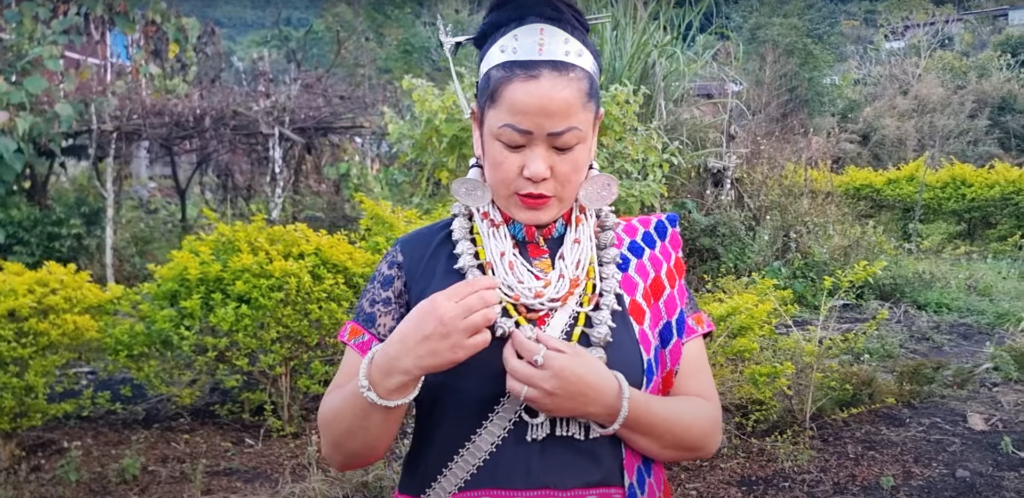
Step outside a mekhap and you’ll see the Miju Mishmi tribe in their traditional clothes. The women wear colorful skirts with stripes and beautiful embroidery. The patterns and bright colors show their creativity. They also wear a lot of silver jewelry, like necklaces and headpieces. Each piece is carefully made and tells a story, passed down from parents to children. Men wear long pieces of cloth around their legs and jackets made from yak hair, a kind of mountain animal. They also wear hats made from bamboo. Today, some people wear modern clothes too, but many still wear their traditional outfits with pride.
A Feast for the Senses: Millet Magic and Culinary Delights
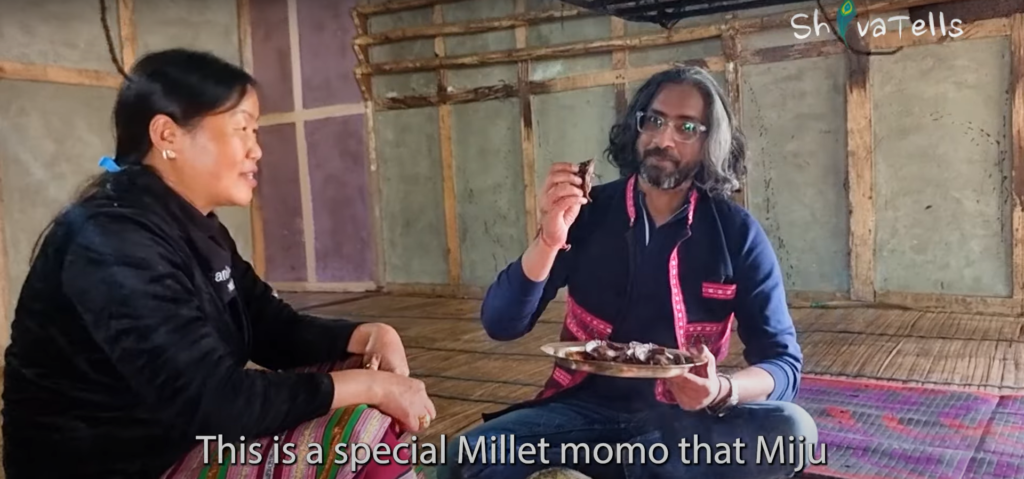
Now, let’s talk about food! Millet is the star of the show here, featuring in everything from momos (steamed dumplings) to a special dish called ‘maram’. As a vegetarian, I couldn’t experience the full range of Miju Mishmi tribe cuisine (the momos had bird meat, sniff sniff!), but the aroma of spices and fresh ingredients was enough to make my mouth water. The highlight? A massive community feast where everyone gathered, sharing plates piled high with local delicacies, laughter filling the air as stories were exchanged under the open sky.
The Curious Case of the Canine Companions: Why Dogs Rule Here
The Miju Mishmi tribe have a unique relationship with their dogs, who hold a special place in their culture. Forget pampered pooches – these canines have a vital role to play! Legend has it that the Miju Mishmi tribe once angered the gods, who took away their ability to speak and work. The loyal dogs, however, remained by their side, helping them farm the land. So, guess who gets the best cuts of meat here? You guessed it – the doggos! It’s a constant reminder of the importance of loyalty and companionship.
Love and Marriage, Miju Mishmi Tribe Style: A Ceremony Steeped in Tradition
Love stories are a dime a dozen here, but the Miju Mishmi tribe way of celebrating a union is quite unique. During weddings, the groom’s family presents the bride’s family with meat – specifically bear or pig meat. Now, this isn’t just about a celebratory feast. It’s a symbolic gesture, a way of saying, “Let’s focus on love and togetherness, not backbreaking labor!” The meat represents the hardships of farming, and by offering it, the groom’s family is promising to take care of the bride and free her from the toil of the fields. It’s a beautiful way to express commitment and ensure a life filled with love and laughter.
Thung Puja: A Celebration of Tradition and Faith
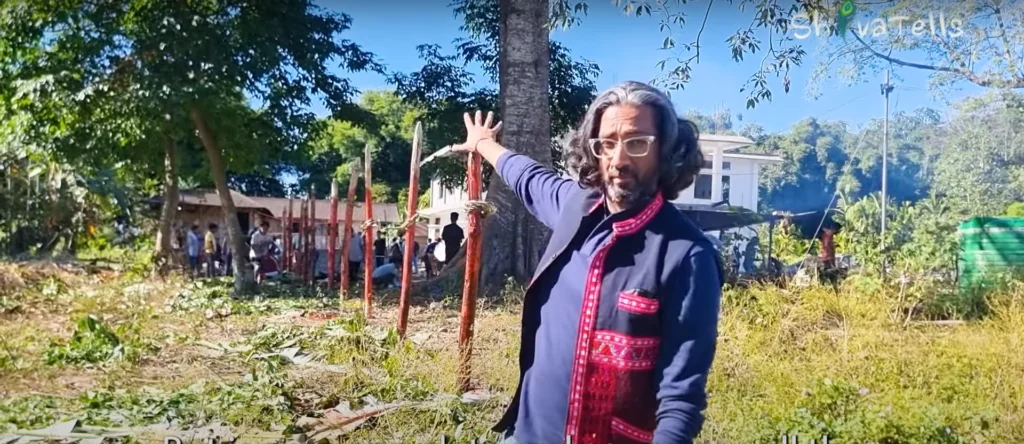
Now, here’s a part that needs a bit of sensitivity. The Miju Mishmi have a grand festival called Thung Puja, where animal sacrifice is a part of the rituals. While I personally don’t condone animal cruelty, it’s important to understand the traditions and beliefs of different cultures. Here, the sacrifice is seen as a way to appease the gods and ensure the well-being of the community. It’s a deeply rooted practice, passed down through generations, and a window into the Miju Mishmi tribe worldview.
Don’t forget to share this blog and subscribe to my channel ShivaTells.
Preserving a Special Culture for the Future.
The Miju Mishmi tribe, like many indigenous communities, faces challenges in today’s world. Modern life can sometimes lead to forgetting old traditions. But there are efforts underway to keep their unique culture alive. People are working to teach others about their crafts, and schools are making sure the stories and songs are not forgotten.
Travel Tips for Your Arunachal Pradesh Adventure
Now that you’re itching to embark on your own Miju Mishmi adventure, here are some handy travel tips to ensure a smooth and enriching experience:
Planning is Key:
- Permits: Arunachal Pradesh requires Inner Line Permits (ILPs) for most visitors. Apply well in advance, especially during peak season.
- Getting There: Tezu, the gateway to Miju Mishmi tribe territory, is accessible by air (limited connectivity) or road. Buses and shared jeeps are readily available, but be prepared for bumpy rides!
- Accommodation: Homestays are the best way to immerse yourself in the Miju Mishmi culture. Many families offer comfortable lodgings and delicious local meals.
- Weather: Arunachal Pradesh experiences all four seasons. The best time to visit the Miju Mishmi is during the pleasant spring (March-May) or autumn (September-November) months.
Respecting the Miju Mishmi Tribe Culture:
- Dress Modestly: When visiting religious sites or interacting with elders, dress modestly. Opt for long sleeves, pants, and avoid revealing clothing.
- Learn a Few Phrases: A few basic Miju Mishmi phrases like “Namaste” (hello) and “Dhanyavaad” (thank you) go a long way in showing respect for the local language.
- Ask Before Clicking: Always seek permission before taking photographs of people or religious sites.
- Be a Responsible Tourist: Leave no trace behind. Pack out all your trash and avoid littering. Respect the natural beauty and cultural heritage of the region.
Embrace the Travel Adventure:
- Go with the Flow: Things might not always run on a strict schedule. Embrace the laid-back pace and enjoy the opportunity to experience a different way of life.
- Be Open-minded: Come with an open mind and a willingness to learn about the Miju Mishmi culture and traditions. There might be customs that differ from your own, but approach them with curiosity and respect.
- Bring Back More Than Souvenirs: The best souvenirs are memories. Engage with the locals, learn about their lives, and create experiences that will stay with you forever.
Exploring Beyond the Miju Mishmi Tribe:
Arunachal Pradesh is a treasure trove of diverse tribes and breathtaking landscapes. If you have extra time, consider venturing out to explore other regions like:
- Tawang: Home to the magnificent Tawang Monastery, the largest Buddhist monastery in India.
- Ziro Valley: A UNESCO World Heritage Site, known for its picturesque rice fields and laid-back vibe.
- Namdapha National Park: A paradise for wildlife enthusiasts, boasting diverse flora and fauna.
So, what are you waiting for? Start planning your unforgettable adventure to the land of the Miju Mishmi. With a little preparation and an open heart, you’ll discover a world unlike any other – a world brimming with color, culture, and stories waiting to be told!
More Than Just Entertainment: Sharing with a Purpose
My goal isn’t just to entertain you with these videos. I want to use them as a platform to share the beauty and richness of the Miju Mishmi culture with a wider audience. Many indigenous communities around the world face challenges like cultural erosion and environmental degradation. By showcasing their way of life, I hope to raise awareness and appreciation for their unique traditions.
Remember to subscribe to my channel for the upcoming video series. And don’t forget to share this blog post with your friends and family who might be interested in experiencing the magic of Arunachal Pradesh!
Until next time, happy travels, and keep exploring!
FAQs
What are the tribes of Mishmi?
The Mishmi people consist of four main tribes:
– Idu Mishmi
– Digaro Mishmi
– Miju Mishmi (also known as Kaman Mishmi)
– Deng Mishmi
What is the Miju Mishmi tribe known for?
The Miju Mishmi tribe is known for their vibrant and colorful traditional clothing, adorned with intricate embroidery. They are also known for their rich oral tradition of captivating stories, songs, and art forms that are passed down through generations.
